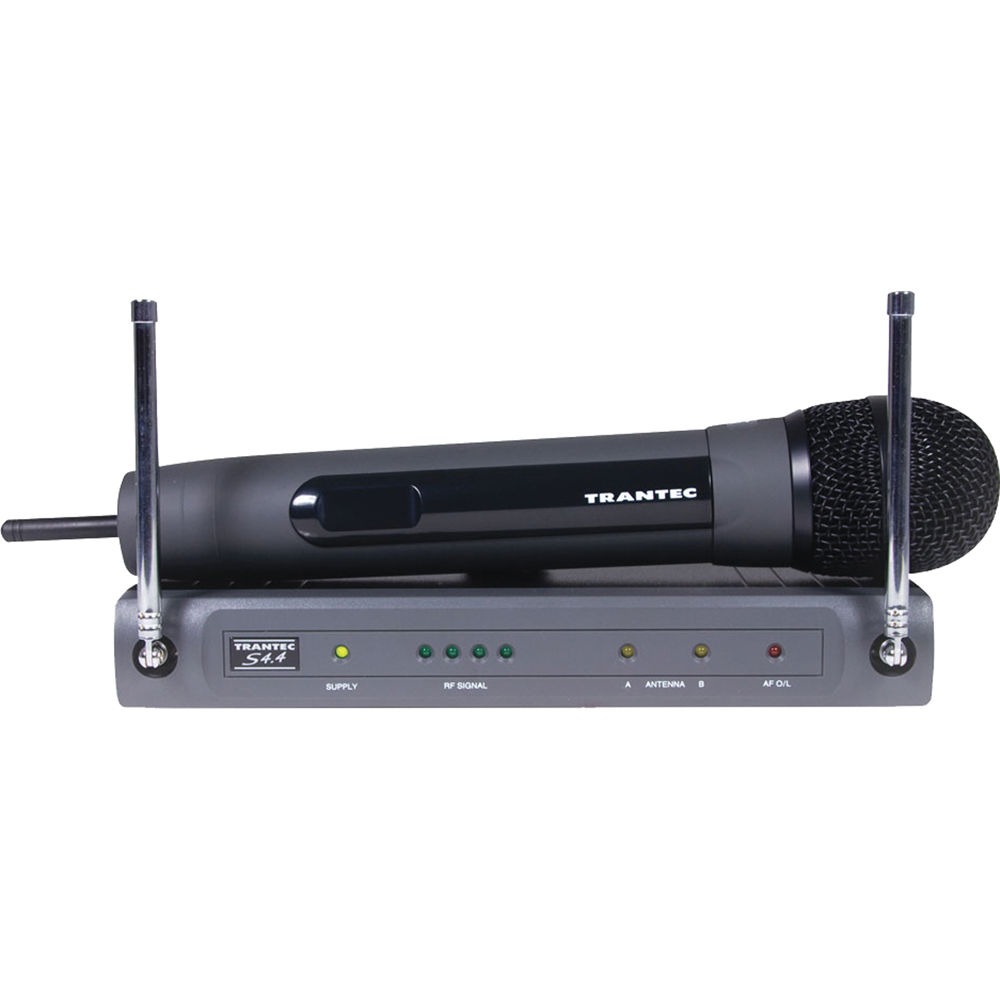At their core, every piece of technology is designed to extend the limits of human ability. Just as binoculars allow us to see further and phones allow us to talk over vast distances, microphones allow us to address large numbers of people without shouting at the top of our lungs.
Invented by Emile Berliner in 1877, the microphone has come to be a key component in everything from smart speakers to in-car entertainment systems, but that’s not to say that it isn’t used for its initial purpose anymore.
Today, handheld microphones like the Trantec s4.4 are commonplace throughout business, educational and entertainment environments. Increasingly, those microphones are of the wireless variety. But what do you need to know about wireless microphones? Join us as we explain everything.
What is a Wireless Microphone?
Wireless microphones work just like traditional wired microphones but are – you guessed it – totally wireless. This makes them suitable for a far greater range of purposes, like outdoor concerts, large conferences, interactive demonstrations and much, much more.
Wireless microphones come in a wide variety of shapes and sizes, from handheld wireless mics which closely resemble wired mics, only without the wires, to lapel or button mics which clip on to clothing for truly unrestricted public speaking.
How do Wireless Microphones Work?
Unlike a wired microphone, which uses a wire to transfer the sound data to a box, which then passes the information on to speakers where it’s amplified many times over, a wireless microphone does all this wirelessly.
Wireless microphones are fitted with small batteries and the circuitry required to broadcast ultra-low latency wireless signals. These are then picked up and translated by a dedicated box, which then feeds the audio on to your speaker systems.
In practice, there is only a tiny latency variation between wireless and wired microphones, making wireless microphones a good option for virtually any scenario.
What Advantages Do Wireless Microphones Have?
Wireless microphones have a number of advantages over their wired counterparts, including:
- Freedom – It’s perhaps the most glaringly obvious advantage of a wireless microphone, but it bears repeating. Having the total freedom to move around as you speak without worrying about tripping over wires or reaching the end of the wire. A wireless microphone also allows microphones to be passed around, leading to more collaborative experiences than a wired microphone might offer.
- Reduced maintenance costs – Wires are useful, but when they’re bent, twisted, stood on and dragged regularly, they can be prone to failure. It’s exactly the sort of punishment that microphone wires are subjected to, and so they’re prone to failure. Needless to say, this can incur additional costs over the lifespan of your microphone.
- Improved visuals – Great presentations are about more than public speaking, they’re about putting on a show which is free from elements which distract or draw attention. The clean visuals offered by wireless microphones make them an essential purchase for any major event.
To learn more about our wireless microphone options or how we can help you set up wireless microphones, get in touch today.



